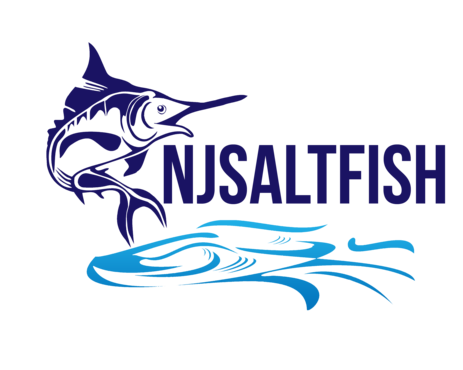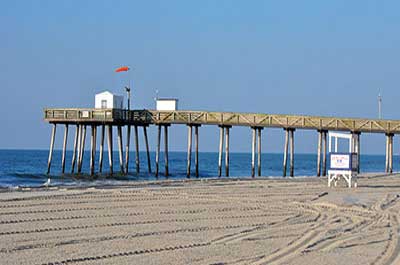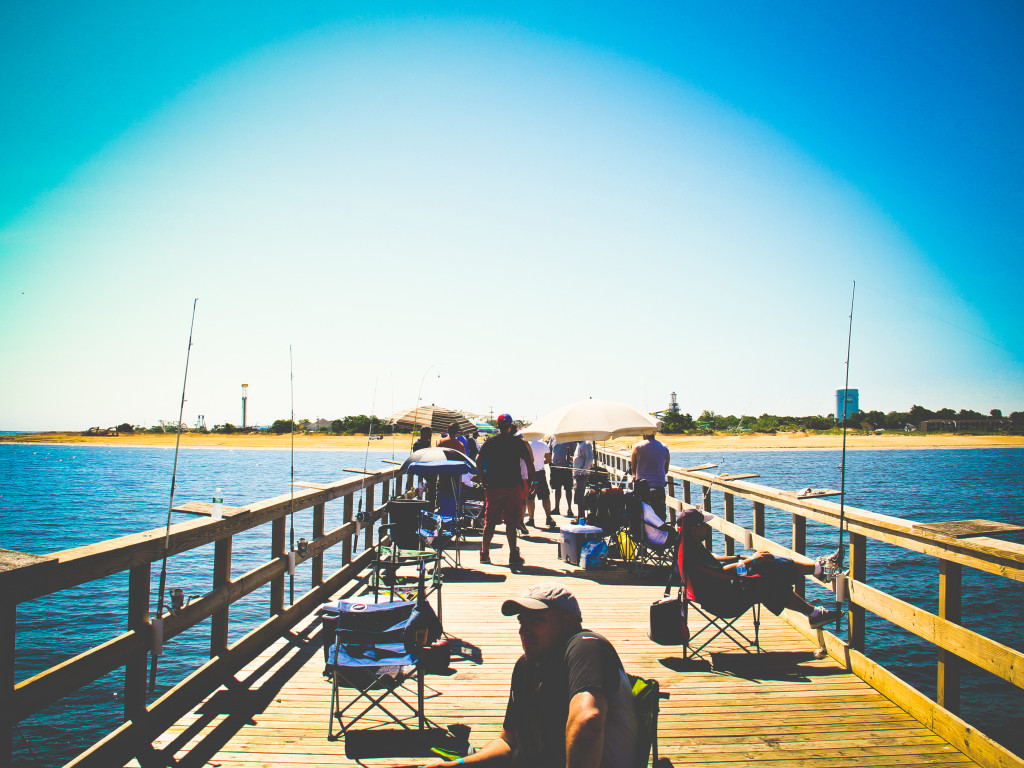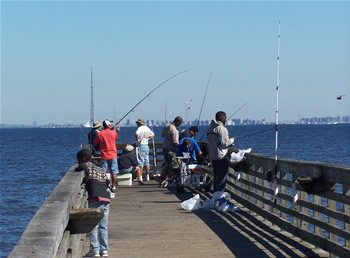Barnegat Bay Winter Flounder Hot Spots and Techniques
I was introduced to saltwater fishing when I was 7 years old while ishing from my uncle's Boston Whaler for Winter Flounder in Barnegat Bay. Almost 50 years later and I sill remember a couple of things vividly from that first trip.
It was cold!
Unless your boat has a cabin or surround, it seems no matter how much clothing you wear it is never enough to keep yourself warm. Needless to say, my uncle's Whaler did not have any shelter. Generally speaking bay water temps (and Winter Flounder preferred temperatures) are in the 40's and 50's in March and April. If you are fishing for winter flounder, bundle up.
It was fun!
It took me all of one trip to realize I loved this. Quite honestly, it was not until I was over 40 could I sleep the night before fishing. Too much excitement and adrenaline pumping. I think winter flounder are underestimated in terms of their fighting ability and overall aggression. The fishing is done with light tackle at most 8-10 ft of water and everyone of flounder comes up “green”.
Since my introduction to winter flounder fishing, generations have passed. And after dozens (if not hundreds) of fishing trips later certain things tend to become clearer as to how to catch more of these fine tasting fish.
When to Catch Winter Flounder

Winter Flounder become active in early spring as bay water temperatures begin to rise. My father always said that St. Patrick's Day was the day to mark on your calendar as the unofficial kick-off to the season. The preferred water temperature range for winter flounder is between 48-52 F. Once the bluefish enter the bay in force, usually late April to early May you can pretty much count on the season being over until the fall.
Where to Catch Winter Flounder
Winter flounder prefer muddy bottom where sea worms are prevalent. In addition to providing habitat to the winter flounder's primary forage, the other thing the muddy bottom does is to soak up the warming rays of the sun. Sometimes, just a small difference in bottom temps can really ignite a bite. There are any number of areas in Barnegat Bay that could fit that bill. I am going to cover 3 of them that I have had my best luck at.
Disclaimer: Maps and locations are approximate. Not to be used for navigation:
Loveladies ICW
Early in the season the fish seem to lie more away from the inlet One early season spot is to the south of the bay toward Loveladies, NJ. The ICW between buoy 44 and buoy 47 marks the area. You can note on the map that shallow water is on the east side of the area so don't go outside the channel on the green side. The red side is more forgiving as the water is deeper. Until you become comfortable in the area, just stay inside the red markers and you will be fine. I like to anchor somewhere near the middle of the shaded area. Thie area has a thick muddy bottom. This area only seems to do well early in the season. By early to mid April, the fish have moved on from here.
Oyster Creek Run Off
To the north, the mud flats direclty in front of the Oyster Creek outfolow is prime winter flounder area. This area really hits the trifecta when it comes to location. It has a mud bottom, the warm water outflow from the Oyster Creek generating station, and the area is adjacent to Oyster Creek Channel. Oyster Creek Channel is one of only 2 main channels connecting the west side of the bay to the inlet. The other channel, Double Creek Channel is not officially open since hurricane Sandy.
You will want to anchor somewhere in the area shaded on the map. As a reference you want to stay north of the 'BI' buoy and Oyster Creek Channel entrance.
As the season progresses the flounder migrate toward the inlet. Fish to the north migrate out of Oyster Creek Channel. Fish to the south migrate out of Double Creek channel. I prefer not to fish directly in Oyster Creek Channel because just too much boat traffic goes by for a comfortable day. Double Creek Channel can be good at times and is not nearly as busy with boat traffic but that channel is not open at the moment so unfortunately we miss the ability to 'follow the migration' .
Meyers' Hole
At the tail end of the season (early May) , Meyers' Hole can hold a large number of flounder. The hole lays right off the main channel toward the inlet and acts as a staging area for flounder before they make their final push offshore.
How to Catch Winter Flounder
Not too much disagreement exists on advice on how to catch winter flounder. Commonly, everyone agrees what you need to do to be successful.
Anchor Up
Unlike it's summer cousin, the fluke, winter flounder are more sedintary and you can not successfully drift for them. So you need to anchor your boat in a prime winter flounder zone and sit tight. Some (most) would agree it is best to double anchor to reduce swing when possible.
Chum Heavily
You will not put together a nice catch of winter flounder unless you chum and heavily at that. Types of chum vary though your choice may be limited to what is available in your local bait shop. The 2 most popular types of chum are clam and mussel. These come in frozen quart size logs in plastic bags which are lowered to the bottom with a chum pot. You should make a couple of slits lengthwise in the plastic bag the chum log is in with your bait knife. This will facilitate the release of chum from the log into the current and start drawing the winter flounder to you. It is best to tie off your chum pot as much up current as possible onto your boat. Periodically, bounce the chum pot on the bottom to help stir things up and get the chum flowing. Using 2 (or more) chum pots is advisable. The chum pots are weighted so they drop easily to the bottom. You should not have to spend more than $20 - $25 on a chum pot.
In addition to frozen clam and mussel chum, there are a number of other things you can chum with to supplement your chum pot. Any kind of fresh shells such as mussels, clam, oysters et can be cracked and dropped to the bottom. Many old timers mix toghether cat foot, rice, and other ingreditents into a home brew. Grass shrimp are an excellent chum as well.
Bait
I have always had the best results with bloodworms for bait. Sandworms would be second best and mussels third. It is important to keep the baits small. You should cut your worms into pieces no bigger than 2 - 2.5 inches. Winter flounder have a very small mouth. You do not want your worm balled up on your hook but rather dangling freely.
Gulp! Bloodworms
Tackle
This is definitely a light tackle fishery. Fish rarely weigh more than 2.5 lbs and you will be fishing in shallow water so heavy sinkers are not required. You will want to have a rig with 2 or 3 hooks. I like to rig my hooks with small yellow grubs or buy hook sets with corn beads. Yellow is winter flounder's favorite color so I try to give them as much of that color as I can. I even spray paint my sinkers yellow. You can get ths rigs you need for Winter Flounder for just a little over $2.
Technique
2 basic schools of thought here. Dead stick or don't dead stick. This is an easy answer to me. Don't dead stick. Rather I prefer to lift my sinker slowly off the bottom and back down in 3 bounce increments with each increment a couple of seconds apart. Then take a 30 second break and repeat. I believe this light jigging action will help you to put many more fish in the box than simple dead-sticklng.
The 'best' time to winter flounder fish is on a nice warm sunny late morning on the very last of the incoming tide through slack, through the first couple hours of the outgoing tide. Now, those conditions may not coincide with when you can fish but that would be my description of when is the best time. One thing I can tell you, winter flounder is one of the few fish that I don't really try to get an early start. You need the sun to be your friend with this fish. The outgoing tide is key because in the Spring the ocean temps are colder then the bay. The incoming waters therefore tend to shut down the fishing. Once the water starts flowing out, the warmer shallows start draining through the channels and the fish start to feed.






















